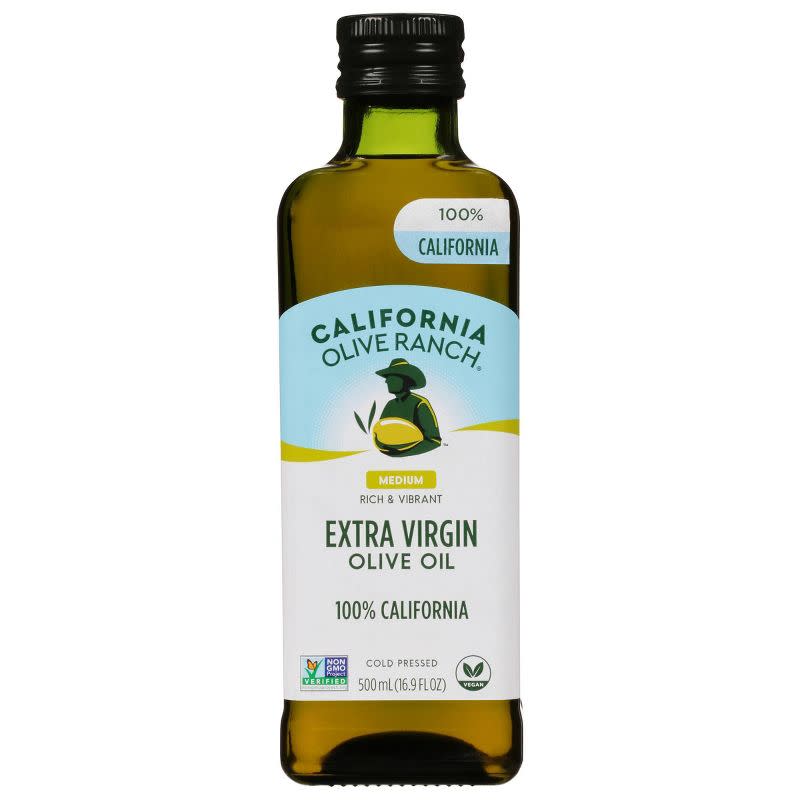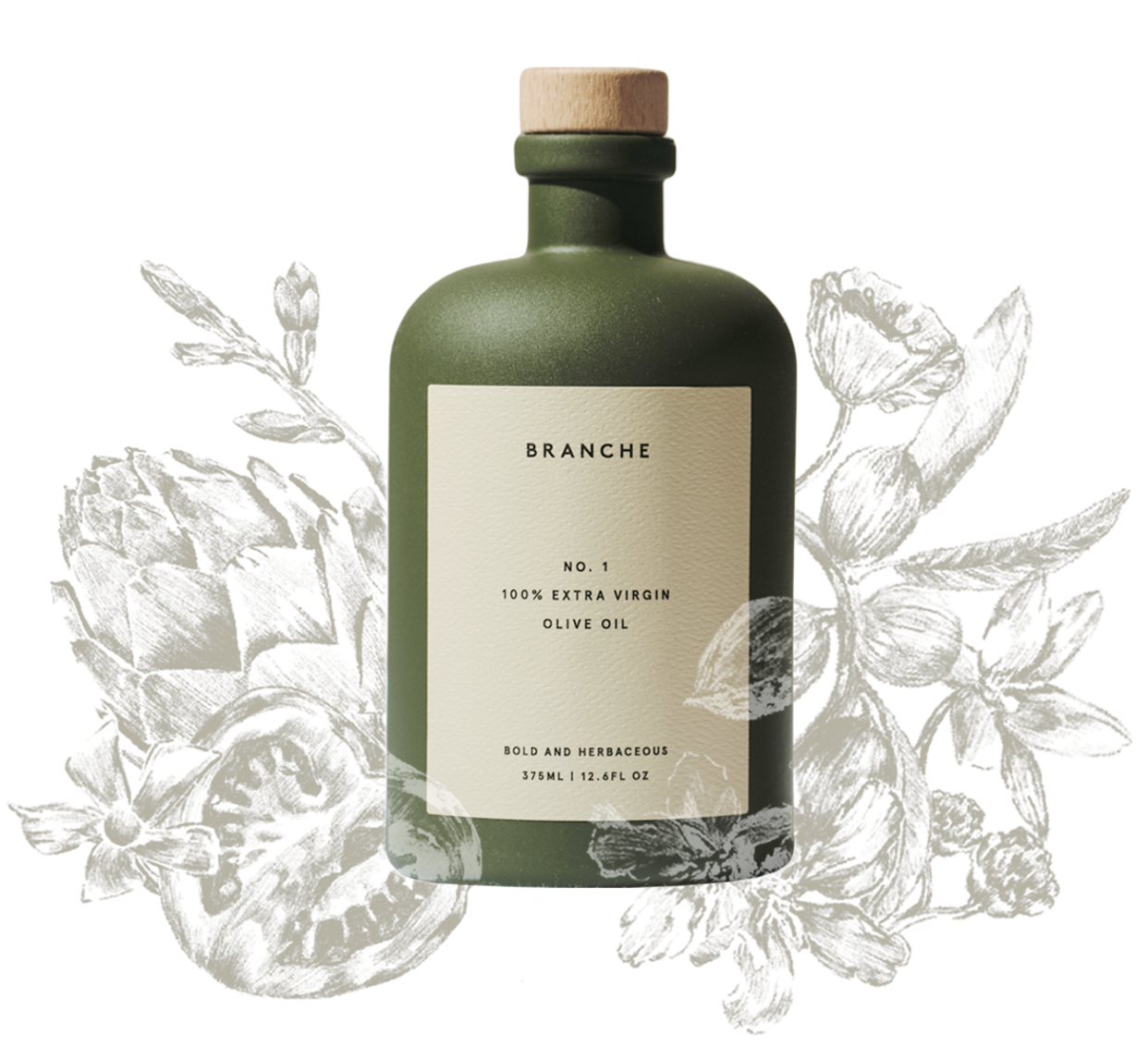Expert tips for buying olive oil
Select is editorially independent. Our editors selected these deals and items because we think you will enjoy them at these prices. If you purchase something through our links, we may earn a commission. Pricing and availability are accurate as of publish time.
Shopping for olive oil is like shopping for wine: Any bottle can generally get the job done, but paying attention to how it’s produced and what region it comes from helps you purchase a product that best fits your flavor preferences.
Before adding a bottle of olive oil to your online shopping cart — or reaching for it at the grocery store — first consider how you want to use it, said Brooke Gil, an olive oil category merchant for Whole Foods Market. Some people exclusively use the ingredient when sautéing or roasting foods, while others like to mix it into salad dressings or drizzle it on bread (or even ice cream).
SKP AHEAD Extra virgin olive to shop | How to store olive oil | Using olive oil in the kitchen
“There is a very large range of experiences you can have,” Gil said, “and you will get a unique smell and flavor when trying out different blends and single varieties.“
We spoke to experts about what factors impact olive oil’s flavor and how you may want to use it while cooking. Our experts also provided shopping tips, which we used to round up extra virgin olive oils, the highest quality olive oil you can buy.
Best extra-virgin olive oils to shop
With experts’ guidance in mind, we rounded up a handful of extra-virgin olive oils you may want to consider. The products we listed below are all extra-virgin olive oils that come in dark green, brown or completely covered bottles, per experts’ recommendations. We included options across price points, from a variety of regions and made from different types of olives so you can browse extra virgin olive oils with a range of flavor profiles.
All of the extra-virgin olive oils below are also cold-pressed, which is the method by which olive oil is most commonly — if not always — made, experts told us. Cold-pressed means that when the olives are pressed to extract oil, there’s no heat involved and they’re kept at a low temperature to keep flavors intact, according to Elizabeth Barbone, a recipe developer and cookbook author who runs the site Cook Fast, Eat Well.
Kosterina Original Extra Virgin Olive Oil
Kosterina’s extra-virgin olive oil is made with Koroneiki olives grown in southern Greece and has a robust flavor with a peppery finish, the brand says. Gil noted that Koroneiki olive oil pairs well with savory foods like hummus and pita. It’s available in a completely covered bottle and you can purchase it in two sizes: 375 milliliters or 500 milliliters.
Kosterina Original Extra Virgin Olive Oil

Kosterina Original Extra Virgin Olive Oil $29.95 at Kosterina
Brightland Rosette
Brightland offers different types of extra-virgin olive oil, including infused options like Rosette, a garlic olive oil. It’s made from Frantoio olives grown along the central coast of California, and Brightland describes the flavor as robust, pungent, rounded and smooth. This olive oil comes in a completely covered, recyclable 12.7-ounce glass bottle, and Brightland says its bottles are UV-coated to protect the oil from light.
Brightland Rosette

Brightland Rosette $40.00 at Brightland
California Olive Ranch Extra Virgin Olive Oil
This extra-virgin olive oil is a more budget-friendly option and can be found at grocery stores nationwide, as well as online. The brand says the oil, which is made with olives grown in California, has floral, fruit, herb and grassy notes. It comes in a dark green glass bottle and you can purchase it in three sizes: 500 milliliters, 750 milliliters and 1 liter.
California Olive Ranch Extra Virgin Olive Oil

California Olive Ranch Extra Virgin Olive Oil $11.99 at California Olive Ranch
California Olive Ranch Extra Virgin Olive Oil $11.89 at Target
California Olive Ranch Extra Virgin Olive Oil $12.99 at World Market
Branche No.1
Branche is a newer extra-virgin olive oil company that offers two varieties: No.1 and No. 2. The brand says No. 1 has a robust earthy flavor with herbaceous notes, while No. 2 offers a more delicate and buttery flavor that’s on the sweeter side. Both olive oils are made from Pical, Arbequina and Hojiblanca olives grown in southern Spain — Gil recommended Arbequina olive oil for making tapenade or dressing salad. Branche’s olive oils come in completely covered 12.7-ounce bottles.
Branche No.1

Branche No.1 $40.00 at Branche
Vignoli Extra Virgin Olive Oil – Everyday Kitchen
Made from Coratina and Ogliarola Barese olives, this fruity extra-virgin olive oil from Vignoli has hints of white almonds and apples, according to the brand. Gil mentioned that Coratina olive oil works well for cooking meat, grilling and frying. This olive oil comes in a dark green 500-milliliter glass bottle.
Vignoli Extra Virgin Olive Oil – Everyday Kitchen

Vignoli Extra Virgin Olive Oil – Everyday Kitchen $19.00 at Vignoli
How to shop for olive oil
Below, we broke down some other factors experts recommend considering when you’re deciding which olive oil to buy.
Extra-virgin olive oil versus other varieties
The experts we spoke to recommended opting for extra virgin olive oil since it’s the highest quality option on the market. Extra virgin olive oil is processed differently than other types of olive oil, like virgin and refined varieties. “Extra-virgin olive oil is extracted through a cold press or centrifuge to maintain the quality of the oil and reduce chances of oxidation — without the use of chemicals,” Gil explained. For oil to be considered extra virgin, it should meet standards set by organizations like the International Olive Council, which regularly certifies laboratories that test olive oils against the IOC standards.
Harvest date
A handful of factors impact olive oil’s flavor profile, one of which is when it was produced. “The fresher the olive oil, the better the quality since olive oil oxidizes with time, light, heat and air,” Gil said. Olive oil bottles list a harvest date, which you want to be as close to your point of purchase as possible. A more recent harvest date means the olive oil is fresher, according to Barbone.
Region and olive variety
If you look at a bottle of extra virgin olive oil, you’ll see the olives’ origin listed — this may be a U.S. state, country or more general area, like the Mediterranean. Origin is important to note because olives are region-specific, and the type of olive an oil is made from impacts its flavor. “For example, there are some Italian varieties with a more intense flavor and finish than some more typical olive varieties in other countries,” Gil said.
Since olive oils can range in flavor from peppery to buttery, experts said it’s important to think about your personal flavor preferences. Research the types of olives that match that flavor profile to help you narrow down what parts of the world you may want to focus on when buying a bottle of olive oil.
Bottle size and color
Olive oil begins to decline in quality once you open the bottle because it’s exposed to air. And in general, the further it gets from an olive oil’s harvest date, the less fresh the oil will be. With that being said, when you’re deciding what size bottle to buy, think about how often you use olive oil. Gil recommended purchasing a larger bottle if you use olive oil often, but if you plan to cook with it occasionally, she said it may be best to purchase a smaller one.
Another factor to pay attention to is the color of the bottle. Since light can degrade olive oil over time, a clear bottle doesn't protect the ingredient from sunlight or the lights in your home. “Shoppers should look for dark green, brown or completely covered bottles that filter out the light and preserve the quality of the olive oil for longer,” Gil said.
While bottle color matters, the color of the oil itself has no direct relation to its quality, Gil noted. Olive oil can range in color from yellow to green, and factors like the types of olives used and how ripe the olives were when they were harvested influence the oil’s shade.
Price
Extra-virgin olive can range in price, but a more affordable bottle can be just as flavorful as higher-priced options. Since the olive oil you gravitate toward largely depends on your flavor preferences, she recommended trying a bunch of different options over time to find one you love.
If there’s room in your budget to purchase a higher-priced olive oil, Barbone recommended reserving that one for making dressings and dipping bread in — you’ll use less of it at one time and get more use out of it. You can buy a different, less expensive olive oil to use for more frequent cooking needs.
Infused olive oil
Each variety of extra virgin olive oil has its own unique flavor, and some brands add to that flavor by infusing the oil with ingredients like garlic, spices, herbs, aromatics and more. Gil said there’s no difference when it comes to how to buy infused versus plain extra virgin olive oil, other than considering what types of additional flavors you want to taste in the product and how you’ll use the oil in your kitchen.
Infused olive oil generally has a shorter shelf life than regular extra virgin olive oil — infused oil typically lasts for about a year, while plain extra virgin olive oil lasts for about two years on average, experts said. Infused olive oils also often come in smaller bottles — Gil said they can be easier to use up while they’re still at their best quality.
How to store olive oil and how long it lasts
Because heat, light and air can alter the quality of olive oil over time, experts we spoke to recommended storing bottles in a cool, dark place, like a pantry or cabinet. Avoid storing bottles near heat sources like countertop appliances, the oven or the stove, and keep them away from windows as well.
If you store extra virgin olive oil properly, Gil said it should last about two years, but bottles also list a best-by date you should note. In general, once you open a bottle, olive oil will maintain the same quality and taste for approximately one month, she said.
How to use olive oil for cooking and baking
Extra virgin olive oil is a versatile ingredient you can use whether you’re sautéing vegetables or baking meat and fish. It’s also commonly used in dipping sauces and condiments.
If you’re heating extra virgin olive oil over the stovetop, in the oven or while using countertop appliances like air fryers, keep in mind that its smoke point is typically between 350 and 410 degrees Fahrenheit, according to the North American Olive Oil Association. The smoke point is the temperature at which oils and fats begin to smoke.
As you heat oil at higher temperatures, however, its flavor profiles get destroyed and may disappear entirely, Barbone said. She recommended reserving more expensive olive oil for recipes where you eat it “raw,” or without being heated — you’ll taste its full flavor profile this way.
Barbone cautioned against using olive oil for baking, unless a recipe specifically calls for it. “It will bring a savory flavor to things,” she said. “If I’m baking, I reach for canola or vegetable oil instead.”
Related: We talked to cookbook authors about the kitchen tools and cookware they recommend for Asian cuisine.
Catch up on Select's in-depth coverage of personal finance, tech and tools, wellness and more, and follow us on Facebook, Instagram and Twitter to stay up to date.
